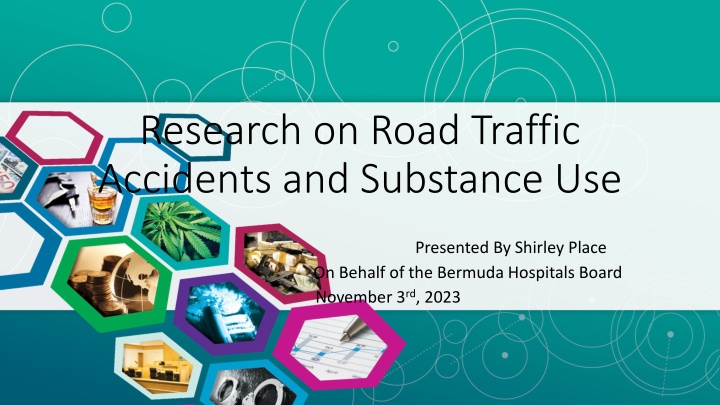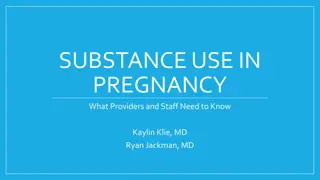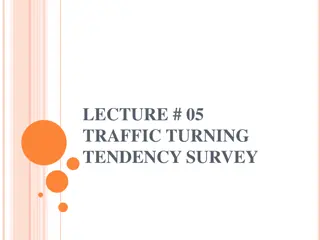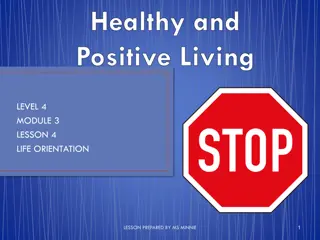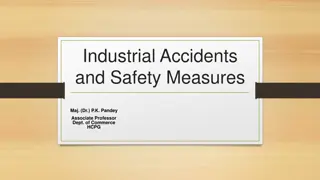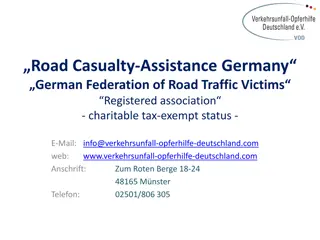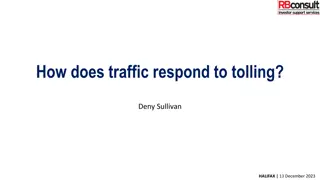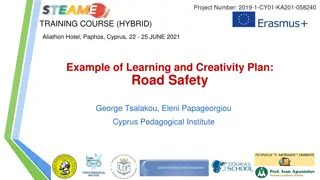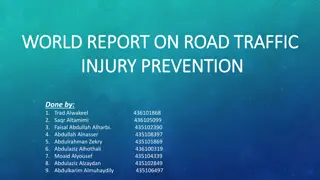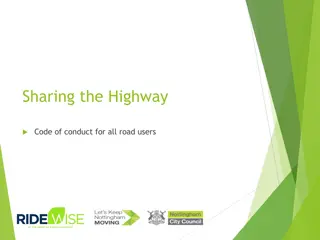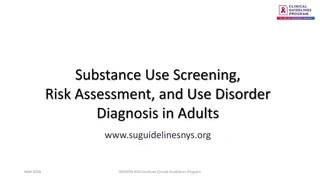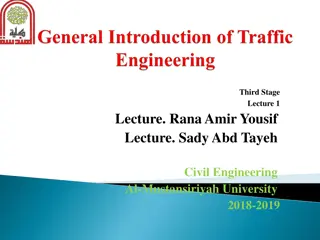Road Traffic Accidents and Substance Use Study by Bermuda Hospitals Board
Research conducted by the Bermuda Hospitals Board aims to investigate the correlation between road traffic accidents and substance use in Bermuda. The study, led by Dr. Dean Okereke and Dr. Celeste Maycock, collected data from May to September 2023 using Electronic Medical Records. Information such as age, gender, date of incident, and presence of alcohol or drugs was gathered to assist in public education and prevention efforts.
Download Presentation

Please find below an Image/Link to download the presentation.
The content on the website is provided AS IS for your information and personal use only. It may not be sold, licensed, or shared on other websites without obtaining consent from the author.If you encounter any issues during the download, it is possible that the publisher has removed the file from their server.
You are allowed to download the files provided on this website for personal or commercial use, subject to the condition that they are used lawfully. All files are the property of their respective owners.
The content on the website is provided AS IS for your information and personal use only. It may not be sold, licensed, or shared on other websites without obtaining consent from the author.
E N D
Presentation Transcript
Research on Road Traffic Accidents and Substance Use Presented By Shirley Place On Behalf of the Bermuda Hospitals Board November 3rd, 2023
Research Study; The Incidence of Road Traffic Accidents Associated with Use of Psychoactive Substances The Bermuda Hospitals Board Research Ethics Sub-Committee approved this study, finding it ethically sound and an appropriate study for Bermuda. The project was the result of some feedback in the 2022 BerDIN Meeting, on the lack of data related to this subject in Bermuda. Information has always been anecdotal on the correlation between road traffic accidents and substance use. The aim is to collect the data for future use to assist with public education and prevention initiatives in collaboration with the Department for National drug Control,
Research Project Leads Dr. Dean Okereke, Chief of Emergency and Hyperbaric Services and Dr. Celeste Maycock, Emergency Physician, agreed to assist in collecting the data through use of our Electronic Medical Record (EMR) based on documentation of patients admitted to the ER.Our EMR was implemented in November 2022.
Data Collection Period & Information Collected Data has been collected between May 1stand September 3rd, 2023. Use of an anonymous patient I.D. # Age Gender Date of Incident Day of the Week Approximate Time of the Incident
Types of Road Traffic Accidents Motor Vehicles Motor Bikes Pedal Cycles Pedestrian Knockdowns Other
Classification of Road Traffic Accidents Single vehicle collision Multi vehicle collision (2 or more vehicles) Hit and Run Other
Presence of Substances Presence of alcohol in blood: Yes/No Quantity of alcohol in blood: Presence of drugs in urine: Yes/ No Specify name of drug (s):
Presence of Substances Were opiates given in the ED: Yes/No Were opiates given before/after urine sample obtained: Before/After / N/A
Outcome of Patients Death in the ED Air vac to overseas territory Admitted to ICU Admitted to surgical ward Taken to operating room and then discharged home Discharged home
BHB Data Collected May 1st September 3rd, 2023 Data was collected from 73 persons involved in RTAs and triaged as ESI category 1, 2 or 3 (more severe injuries) ESI is the Emergency Severity Index. ESI Category 1 persons need immediate medical care ESI Category 2 need care within 15 minutes ESI Category 3 need care within 30 minutes
BHB Data Collected May 1st September 3rd, 2023 Gender: 61 Males, 12 Females (84% males) Type of vehicle: 1 electric unicycle, 7 motor vehicles, 2 pedal cycles, 1 pedestrian knockdown, 62 motorbikes. (85% motorbikes) Classification: 1 fall from cycle, 1 hit and run, 48 single vehicle accidents, 22 multi vehicle accidents, 1 roll over. (66% single vehicle and 30% multi- vehicle)
BHB Data Collected May 1st September 3rd, 2023 Presence of alcohol in blood: Yes (37 patients) No (33 patients), Levels were not done in 2 persons and 1 person refused. (51% had alcohol in their blood) Presence of drugs in the urine: Yes (30 patients), No (23 patients), Not done (17 patients) Refused (3 patients). The urine drug test is a point of care test which detects cannabis, opiates, benzodiazepines, methamphetamines, and cocaine. (43% had other drugs in their urine); 36% were not tested so results are unknown. The percentage of persons who had drugs in their urine could possibly be even higher than currently captured. Outcome: 10 patients were admitted to ICU, 25 admitted to the surgical ward, 35 discharged home, 2 discharged into the care of the police, 1 death (48% required some form of hospitalization)
Next Steps Continued Data Collection Collaboration with the DNDC Research Unit for assistance with data analysis. We are also currently trying to get data on the number of persons treated in the ER who required naloxone to reverse a potential negative outcome due to use of opiates and are advocating for more easy access to naloxone in the public domain to reduce deaths due to overdose.
